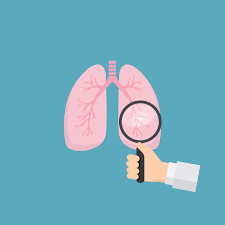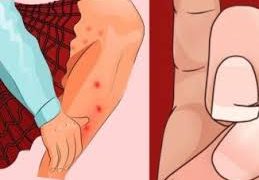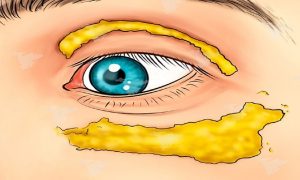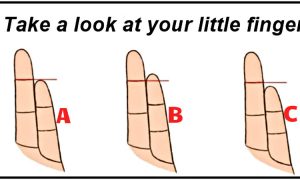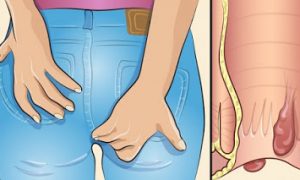What are the symptoms of lung cancer?
Symptoms of non-small cell lung cancer and small cell lung cancer are basically the same.
Early symptoms may include:
- lingering or worsening cough
- coughing up phlegm or blood
- chest pain that worsens when you breathe deeply, laugh, or cough
- hoarseness
- shortness of breath
- wheezing
- weakness and fatigue
- loss of appetite and weight loss
You might also have recurrent respiratory infections such as pneumonia or bronchitis.
As cancer spreads, additional symptoms depend on where new tumors form. For example, if in the:
- lymph nodes: lumps, particularly in the neck or collarbone
- bones: bone pain, particularly in the back, ribs, or hips
- brain or spine: headache, dizziness, balance issues, or numbness in arms or legs
- liver: yellowing of skin and eyes (jaundice)
Tumors at the top of the lungs can affect facial nerves, leading to drooping of one eyelid, small pupil, or lack of perspiration on one side of the face. Together, these symptoms are called Horner syndrome. It can also cause shoulder pain.
Tumors can press on the large vein that transports blood between the head, arms, and heart. This can cause swelling of the face, neck, upper chest, and arms.
Lung cancer sometimes creates a substance similar to hormones, causing a wide variety of symptoms called paraneoplastic syndrome, which include:
- muscle weakness
- nausea
- vomiting
- fluid retention
- high blood pressure
- high blood sugar
- confusion
- seizures
- coma
Lung cancer and back pain
Back pain is fairly common in the general population. It’s possible to have lung cancer and unrelated back pain. Most people with back pain don’t have lung cancer.
Not everyone with lung cancer gets back pain, but many do. For some people, back pain turns out to be one of the first symptoms of lung cancer.
Back pain can be due to the pressure of large tumors growing in the lungs. It can also mean that cancer has spread to your spine or ribs. As it grows, a cancerous tumor can cause compression of the spinal cord.
That can lead to neurologic deterioration causing:
- weakness of the arms and legs
- numbness or loss of sensation in the legs and feet
- urinary and bowel incontinence
- interference with the spinal blood supply
Without treatment, back pain caused by cancer will continue to worsen. Back pain may improve if treatment such as surgery, radiation, or chemotherapy can successfully remove or shrink the tumor.
In addition, your doctor can use corticosteroids or prescribe pain relievers such as acetaminophen and nonsteroidal anti-inflammatory drugs (NSAIDs). For more severe pain, opioids such as morphine or oxycodone may be needed.
What causes lung cancer?
Anyone can get lung cancer, but 90 percent of lung cancer cases are the result of smoking.
From the moment you inhale smoke into your lungs, it starts damaging your lung tissue. The lungs can repair the damage, but continued exposure to smoke makes it increasingly difficult for the lungs to keep up the repair.
Once cells are damaged, they begin to behave abnormally, increasing the likelihood of developing lung cancer. Small-cell lung cancer is almost always associated with heavy smoking. When you stop smoking, you lower your risk of lung cancer over time.
Exposure to radon, a naturally existing radioactive gas, is the second leading cause, according to the American Lung Association.
Radon enters buildings through small cracks in the foundation. Smokers who are also exposed to radon have a very high risk of lung cancer.
Breathing in other hazardous substances, especially over a long period of time, can also cause lung cancer. A type of lung cancer called mesothelioma is almost always caused by exposure to asbestos.
Other substances that can cause lung cancer are:
- arsenic
- cadmium
- chromium
- nickel
- some petroleum products
- uranium
Inherited genetic mutations may make you more likely to develop lung cancer, especially if you smoke or are exposed to other carcinogens.
Sometimes, there’s no obvious cause for lung cancer.
Are there different types of lung cancer?
Lung cancer is cancer that starts in the lungs.
The most common type is non-small cell lung cancer (NSCLC). NSCLC makes up about 80 to 85 percent of all cases. Thirty percent of these cases start in the cells that form the lining of the body’s cavities and surfaces.
This type usually forms in the outer part of the lungs (adenocarcinomas). Another 30 percent of cases begin in cells that line the passages of the respiratory tract (squamous cell carcinoma).
A rare subset of adenocarcinoma begins in the tiny air sacs in the lungs (alveoli). It’s called adenocarcinoma in situ (AIS).
This type isn’t aggressive and may not invade surrounding tissue or need immediate treatment. Faster-growing types of NSCLC include large-cell carcinoma and large-cell neuroendocrine tumors.
Small-cell lung cancer (SCLC) represents about 15 to 20 percent of lung cancers. SCLC grows and spreads faster than NSCLC. This also makes it more likely to respond to chemotherapy. However, it’s also less likely to be cured with treatment.
In some cases, lung cancer tumors contain both NSCLC and SCLC cells.
Mesothelioma is another type of lung cancer. It’s usually associated with asbestos exposure. Carcinoid tumors start in hormone producing (neuroendocrine) cells.
Tumors in the lungs can grow quite large before you notice symptoms. Early symptoms mimic a cold or other common conditions, so most people don’t seek medical attention right away. That’s one reason why lung cancer isn’t usually diagnosed in an early stage.
Risk factors for lung cancer


